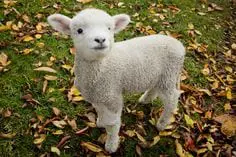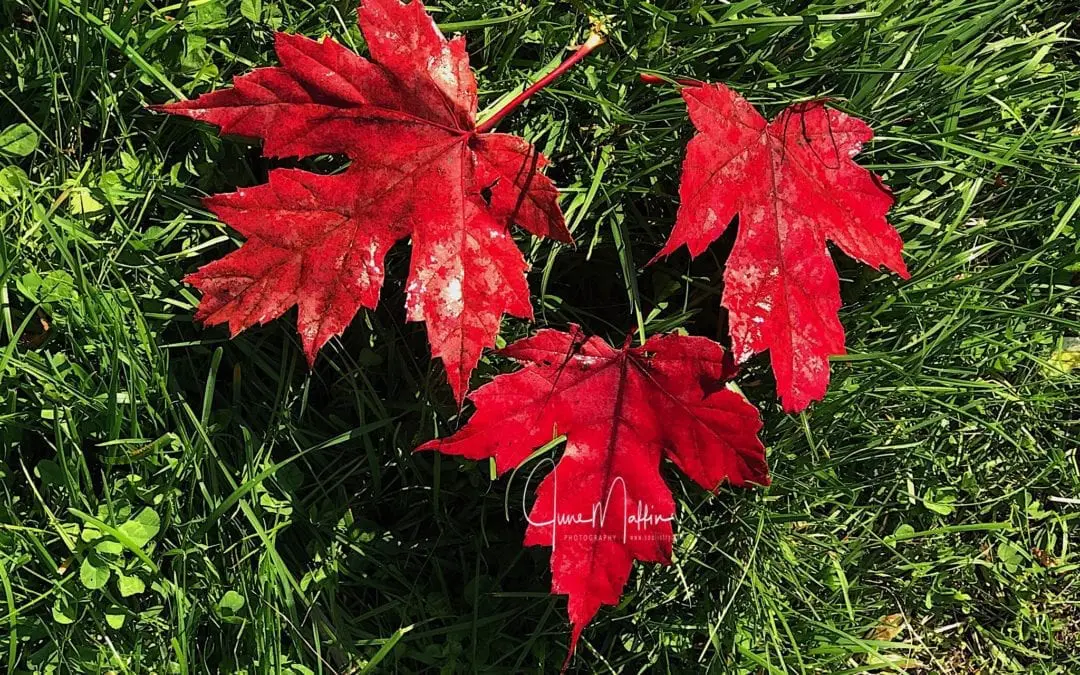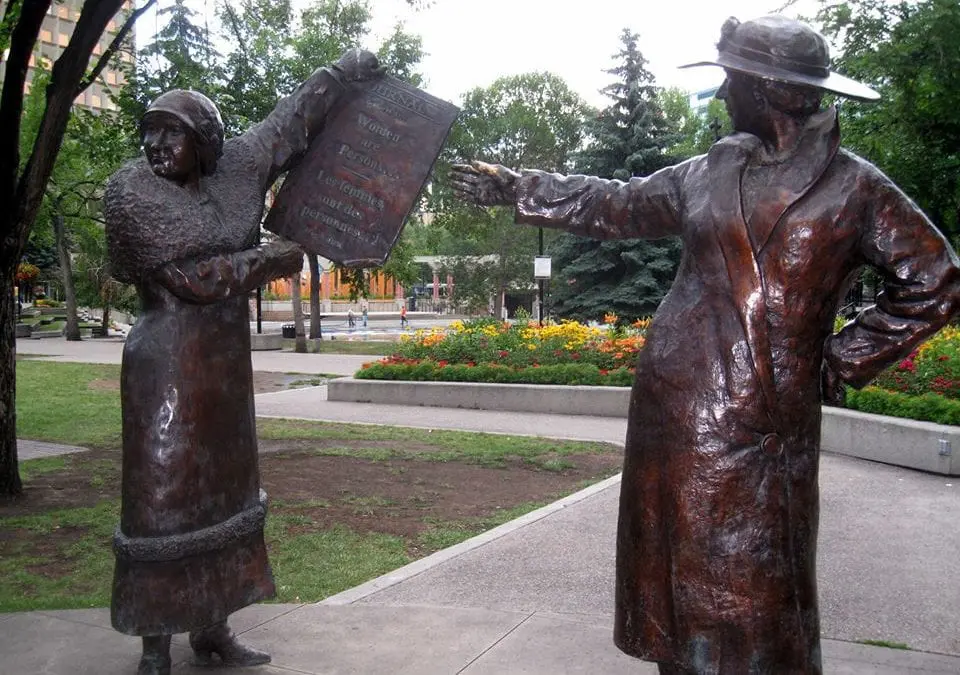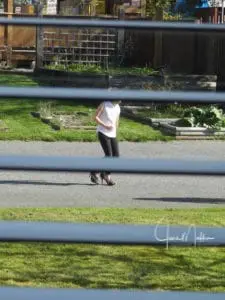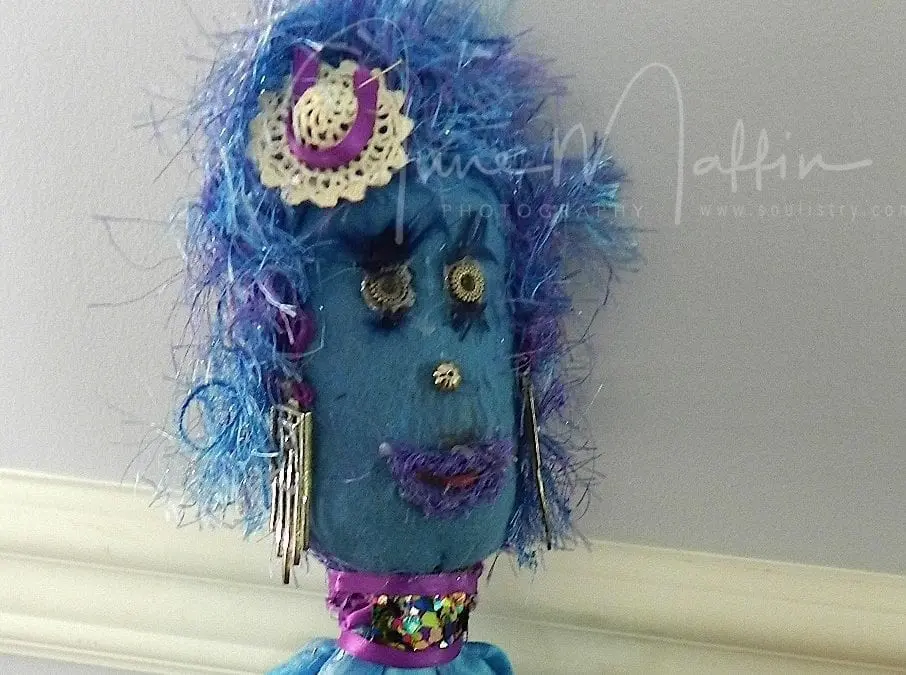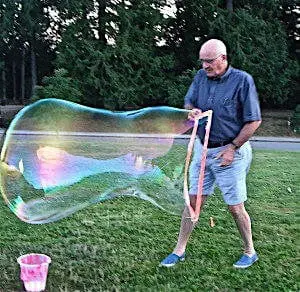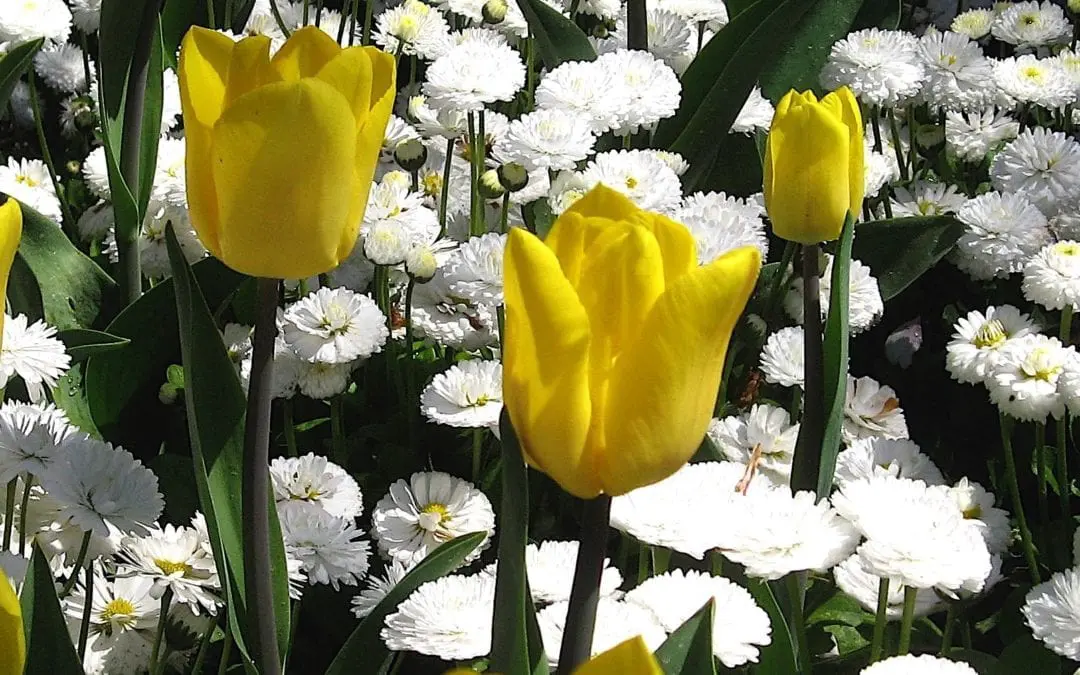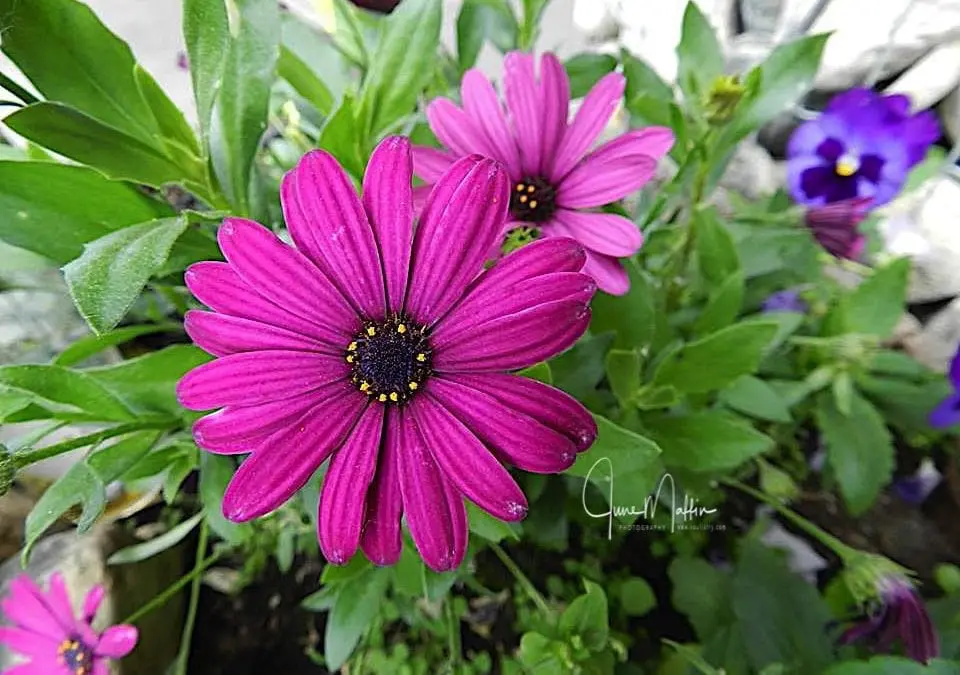
by June | Nov 4, 2018 | Blogposts
A child asks the everpresent question and the parents try to respond.
Sarah: “Daddy, Mommy, I don’t understand why some of the kids are so mean to Juanita and Shiandra. They say it’s something about them not being really part of our country because they don’t have the right skin colour.”
Daddy: “Well, Sarah, some people think that skin colour determines the goodness of a person and they don’t think these children are good.”
Sarah: “But they are! They’re good and kind and fun and I like them! I don’t understand.”
Mommy: “We don’t either, Sarah. Like these three eggs – each of you is different on the outside, but on the inside, you’re all the same … same colour blood, same organs, same ability to laugh and hurt and feel compassion and know what is right from wrong and …”
Sarah: “If only we could all just have our insides be our outsides.”

© June Maffin
www.soulistry.com/blog
www.facebook.com/groups/soulistry
by June | Oct 28, 2018 | Blogposts
A letter to my American neighbours, sisters and brothers
Dear friends,
What has been happening in your country is beyond imagining: the hatred
the fear; the bomb scares this past week; this morning’s deadly shooting at the Tree of Life Synagogue in Pittsburgh; the lack of concerned / caring / pastoral response by your leader in the White House.
You may feel alone. You may feel helpless. You may feel frightened as you have never felt before. You may not have the strength or courage to face “the next.” Please be assured that there are people around the world who are holding you all in the Light; are praying for you; are “with you” in spirit; are hoping and praying and encouraging you to vote in your mid-term elections in numbers your country has never seen before.
May you vote with hope. May you vote love, not hate. May you vote.
June Maffin, a friend and one of your northern neighbours who aches with you and prays for you all.

© June Maffin
www.soulistry.com/blog
www.facebook.com/groups/soulistry
#soulistry

by June | Oct 20, 2018 | Blogposts
Today. Today I took a photo of three red maple leaves, prepared the garden for winter, went to our local Farmer’s Market, visited a friend who is recovering from surgery, went to a fun community sing-a-long of the Mary Poppins movie, and voted in our local elections.
Today was a day like many others. And yet it was different. It was different because (as well as being blessed by all of the other things I did), I was blessed by living in this country where I am free … free to garden … free to shop … free to visit friends … free to join in community activities … and free to vote. Free to vote without fear – fear … of harassment … of recrimination … of violence … of interference. Free to research the issues and the candidates. Free to vote the way I choose. Not everyone can do that.
Some may say that it was co-incidental that today was the day I ‘happened’ to see the red maple leaves on the ground, ‘happened’ to take their photo, and that it all ‘happened’ on the day of our municipal elections. Nope – nothing ‘happenstance’ about it. There aren’t many maple trees with bright red leaves where I live, and seldom have I seen them up close, still vibrant in colour. As I bent down to see the three red maple leaves, and take their photo, I remembered something I’d learned a long time ago … a history lesson which told about a time (long before the first European settlers arrived in Canada) when Canada’s aboriginal people (our First Nations people) had discovered the food properties of maple sap which they gathered every spring and how that discovery of the importance of the maple leaf deeply affected Canadian history.
While many historians trace the maple leaf’s service as a Canadian national symbol as early as 1700, its first official recognition was 1867 when Alexander Muir composed the unofficial anthem in English-speaking Canada, ‘The Maple Leaf Forever.’ Not surprisingly, the Canadian flag has a lovely bright red maple leaf in its centre. Raised on Parliament Hill in Ottawa for the first time on February 15, 1965, the red maple leaf has since become the most-recognized symbol of Canada, symbolizing unity, tolerance and peace. Voting today, and all that the privilege, responsibility and blessing of voting means to me, was graphically illustrated in those three bright red maple leaves I ‘happened’ to see.
Today.

© June Maffin
www.facebook.com/groups/soulistry
www.soulistry.com/blog
#soulistry

by June | Oct 19, 2018 | Blogposts
I am a person. That may seem to be a rather strange thing to post, but before October 18, 1929, in Canada, women were *not* persons.
But on October 18, 1929, Canadian women were declared “persons” under Canadian law. And for that, I give thanks to five ‘persons’… the Famous Five: Henrietta Muir Edwards, Nellie Mooney McClung, Louise Crummy McKinney, Emily Murphy, Irene Marryat Parlby … and the men who “stood with them.” (http://www.famou5.ca/the-persons-case/)
I am a person. And I will vote – with gratitude (after familiarizing myself with the candidates by reading their literature, asking them questions, participating in all-candidates meetings) in local elections, provincial elections, federal elections. I hope that all other ‘persons’ will, too. 
(When were women declared to be persons: The last line of the judgement reads, “Understood to mean ‘Are women eligible for appointment to the Senate of Canada,’ the question is answered in the negative.” This judgement was overturned by the British Judicial Committee of the Privy Council on October 18, 1929. This case came to be known as the “Persons Case”).

© June Maffin
https: www.soulistry.com/blog
www.facebook.com/groups/soulistry
#soulistry

by June | Sep 25, 2018 | Blogposts
The world is a Muddy Mess. Russia, China, North Korea – just say the words and people shudder. Think Syria and images of shattered lives jump out. Picture Guatemala and Hawaii and dangerous lava flows, rather than holiday-time on the beach, come to mind. Remember Puerto Rico and phrases like “still no electricity a year later!” and images of a President throwing rolls of paper towels flash into view.
Daily, we learn of fires, floods, tornadoes; unsafe drinking water, hurricanes; homelessness, addiction, mental health issues, poverty in developing countries and developed countries, and children who are being abducted, prostituted and held in prison-like conditions. Watch what is happening in the United States, and, well … it’s a muddy, Muddy Mess World!
And then something happens to remind us of hope … the kind about which poet Emily Dickinson wrote: “Hope is the thing with feathers That perches in the soul, and sings the tune without the words, and never stops at all, and sweetest in the gale is heard; and sore must be the storm that could abash the little bird That kept so many warm.”
That hope showed up for me when a neighbour’s child strutted past my front window in her mother’s high heel shoes … well, maybe ‘strut’ isn’t the right word … more like ‘wobbled’. A smile broke out on my face, hope filled my heart, and joy flooded my soul.
That hope showed up for me when I experienced barefoot, dirty, hungry little children standing (as there was no room for them to sit in a tiny room in an impossibly crowded refugee camp in Sri Lanka) and sang with glorious smiles on their faces as their eyes lit-up with excitement and happiness. I remember a smile breaking out on my face, hope filling my heart and joy flooding my soul.
As I think of the Muddy Mess this world is in, as I wonder what kind of a world we are leaving these children and their children and their children, I focus on those two images: the children in the refugee camp in Sri Lanka; the neighbour child in high heels crossing the street. They remind me to not give away my hope. Negative thinking doesn’t do me any good. Negative thinking doesn’t do any good for the children. Negative thinking doesn’t do any good for this Muddy Mess World.
So I look to hopeful images. They remind me of the power I have to make a difference in my little corner of the world … to vote … to pray …to be active in my community … to do what I can to keep this community safe … to stay strong and hope-filled and take a lesson from the children – keep playing, keep laughing, keep dancing, keep singing. In spite of the grief, in spite of the fear, in spite of the angst and stress and worry … there are children in this Muddy Mess World playing dress-up, singing, dancing, playing baseball with pebbles from the bombed-out buildings. We must not let negative energy cloud our ability to hope … and believe … that this Muddy Mess World *will* get cleaned up.

Photo & Text © June Maffin
www.soulistry.com
www.soulistry.com/blog
www.facebook.com/groups/soulistry
#soulistry

by June | Sep 18, 2018 | Blogposts
My name is UNFI. I’m not pretty. I’m not adorable. And I’m not finished.
Far from it. I am ‘unfinished.’ UNFI for short.
But I am “becoming” finished. So are you, dear reader … none of us has yet ‘arrived’ … none of us is ‘finished’ – yet In a way, we are all UNFI.
And just as the creator, who created me delights in me, so too does the Creator who created you … delight in you … just as you are … on the road to ‘becoming finished”. We are all UNFI. 🙂
An aside: UNFI is a puppet and in her ‘unfinished’ state, she was entered into the puppet category at the Fall Cowichan Exhibition and was awarded Second Prize. And no, I’m not going to ‘finish’ her for if I did, she would no longer be my teacher and remind me that I have not-yet-arrived, that I am in the process-of-becoming, and that I too am UNFI. 🙂

© June Maffin (www.soulistry.com/blog)

by June | Aug 5, 2018 | Blogposts
In today’s intense world where alternative facts masquerade as truthful statements; Executive Orders bring confusion and fear; outrage is commonplace; inner peace is quickly disappearing; concerns and fears about compromised health, terrorism, disasters, broken relationships, economic crises, political harangue and other stressors bring confusion, frustration, anger, and fear, a Spirituality of Play may seem to be a curious matter.
But, more than ever, a Spirituality of Play is an attitude that needs to be cultivated in society, in educational systems, in families, by seniors and adults and by children and youth so they can become adults who live balanced lives where laughter, joy and hope are intrinsic throughout their adult life.
From the Greek word selig (which means blessed) comes the English word silly. I like to think that there is something sacred about the ability, to be silly, to play, to laugh, to be child-like. Many faith traditions (Christian and Hasidic storytellers, Zen masters, Taoist sages) encourage us not to take ourselves too seriously. These prophets have an important role in the spiritual life because they espouse the spiritual practice of play as Ralph Waldo Emerson wrote “It is a happy talent to know how to play” and as author Margaret Guenther wrote “When we play, we also celebrate holy uselessness. Play, in its disinterestedness and self-forgetting, can be fruitful.”
When we play; when we enjoy the fullness of life with its curiosities, frivolities and insensibilities; when we don’t take ourselves too seriously, play (like prayer), can be healing – healing to the body, mind and soul.
~ When Hindus speak of the creation of the universe, they don’t call it the ‘work’ of God; they call it the ‘play’ of God which can translate into ‘play’ being sacred and holy. When we play, we leave behind the daily stressors and allow our spirit to breathe and re-create ~ Literature, the arts, various traditions and holidays remind us of the importance of play of giving ourselves permission to be silly and foolish ~ Russian artists from the 15th century often featured the yurodivy, a kind of “holy fool” in their paintings ~ April Fool’s Day is a day for laughing, for playing gentle jokes and for trying to trick friends. ~ On the last day of the nature festival ‘The Hill’ in India, people have fun by sending friends on impossible errands such as finding a stick with only one end. ~ In Native American traditions, Coyote is the Trickster while in the Aztec tradition, Coyote is referred to as ‘God’s Dog’, and in Hollywood, Wil E. Coyote always played tricks on the Roadrunner.
A Spirituality of Play helps us live with mystery, paradox and absurdity. It can open doors of flexibility, intuition, vulnerability, and doors of child-like innocence and spontaneity. If we can believe that the Creator created anteaters, duck-billed platypuses, giraffes clownfish, pink flamingoes,
and us (!), surely it’s not surprising that the Creator has a great sense of humour and encourages us to laugh – and play!
Age creeps up … surprises us … reminds us of our mortality. Chronological aging is one thing. Growing old is another thing. Perhaps many grow old because they stop playing? Play comes in many forms: laughter, dancing, doodling, board games, running with the dog along the beach, playing bridge, engaging in a sport, playing an instrument, creating anything (a shed, a dress, a poem, a painting, a piece of calligraphy, a meal, a book, a piece of pottery, a magazine article, a computer program, a piece of sculpture, a photograph, a monogram, a garden, a scrapbook, a bookcase) …
I may be aging more quickly than I would like, and my body may be showing its age a bit more every day, but I refuse to grow old. Even if it’s only a bit each day, (just as I try to exercise a little each day), I try to play a little each day. This week I’ll be playing with cardstock and paper and creating a handmade card for a friend who is unwell; when it’s cooler outside, I’ll be playing in the garden; and then there’s the recipe book I borrowed from the library that is inviting me to play in the kitchen and try out some new recipes. I suppose I could look at these three ‘play’ activities and see them as ‘chores,’ but I don’t.
Perhaps attitude plays an important role in the aging process. My beloved husband Hans was 85 (!) years young when I took this photo of him playing with bubbles in a local park. Hans was a pen and ink artist, calligrapher, retired engineer – a serious intellect – who grew to understand in his later years, the importance of incorporating a Spirituality of Play in his life. Each day, I ‘age’ – but I don’t ever want to ‘grow old.’ If I reach Hans’ age, I want to still be incorporating a Spirituality of Play every day, in some way.

© Photo & Text: June Maffin
Welcome to Soulistry
Blog
Books
www.facebook.com/groups/soulistry

by June | Aug 4, 2018 | Blogposts
It’s been said that some things in life can’t be recovered:
a stone … after it’s thrown;
a word … after it is said;
an occasion … after it’s missed;
dessert … after it’s been eaten;
the time … after it’s gone;
a person … after they die.
Life is short sooooooo, let’s forgive quickly; kiss slowly; love deeply; laugh uncontrollably; express gratitude for the big and little blessings and never regret anything or anyone that makes you smile.
To life! L’chaim!
© June Maffin www.facebook.com/groups/soulistry
www.soulistry com www.soulistry.com/blog #soulistry

by June | Aug 2, 2018 | Blogposts
I don’t understand religious intolerance. I don’t understand non-religious intolerance. If people are kind, compassionate and respectful to animals, the earth, the sky, the waters, other people, themselves, what harm is there if they choose to believe in a God, but do so in their own way – use different names, wear different types of clothing, worship in different structures, have different traditions, etc.? If people are kind, compassionate and respectful to animals, the earth, the sky, the waters, other people, themselves, what harm is there if they don’t believe in a God, or don’t know if there is a God?
But, it happens – and it begins with judgement. When judgement begins, intolerance isn’t far behind. And where there is intolerance … hatred can flourish.
There are those who believe in a Deity who may not experience or understand the Divine in the same way as others, and they try to live loving, kind lives. There are those who don’t believe in the existence of a Deity or don’t know if there is a Deity. Atheist or agnostic, they try to live loving, kind lives.
In these difficult days of fear-mongering threats by world leaders, I find it is good to believe that, regardless of ascription or non-ascription to a religion, there are people who try to live loving, productive lives. Why can’t the focus be on the way people live loving and kind lives of thoughtfulness, gentleness, self-control, patience, goodness, compassion, gratitude rather than their belief, or disbelief, in a Deity? Why can’t the focus be more on the Good that unites, than that which divides?
I don’t understand intolerance of people who believe in a Deity. I don’t understand intolerance of people who believe in a Deity, but believe differently. I don’t understand intolerance of people who don’t believe. And I don’t understand intolerance of people who don’t know if they believe. I just don’t understand.

Text & Photo © June Maffin
www.soulistry.com/blog
www.soulistry.com
www.facebook.com/groups/soulistry
